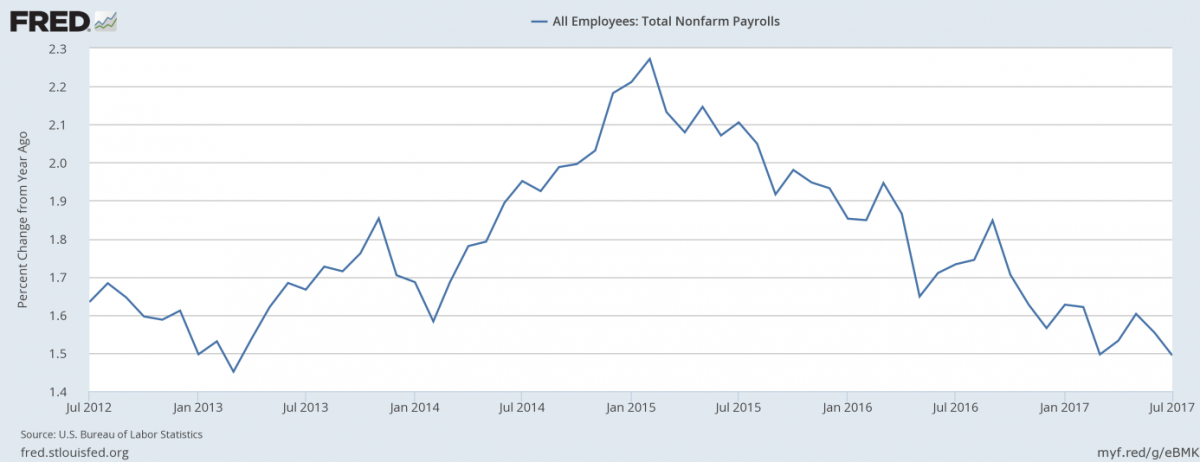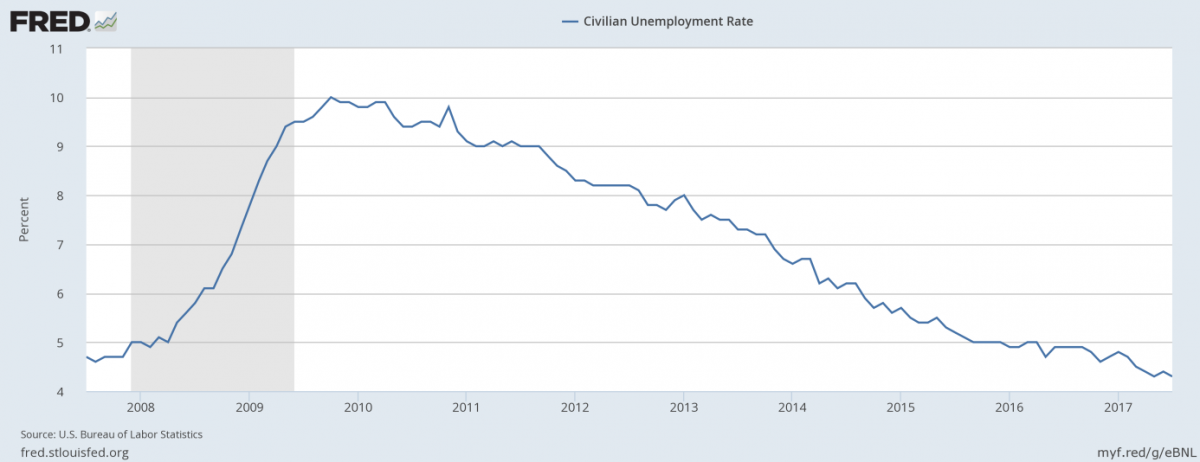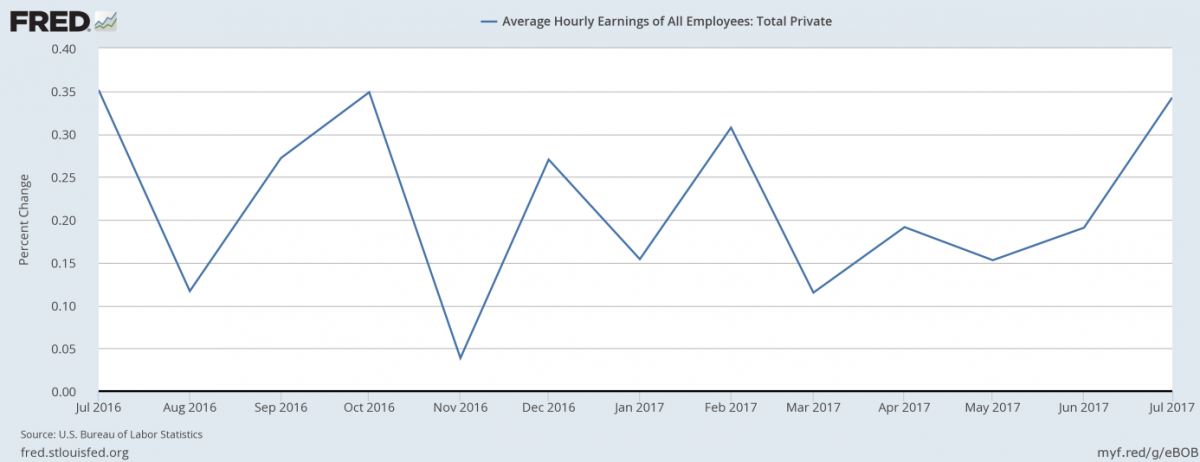July Payrolls And Gold
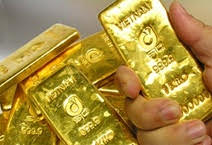
The US economy added 209,000 jobs in July. What does it mean for the gold market?
Job Gains Strong In June
Total nonfarm payroll employment increased 209,000 in July, following an increase of 231,000 in June (after an upward revision), according to the U.S. Bureau of Labor Statistics. Analysts had expected 178,000 jobs to be created. Thus, the actual number significantly surpassed expectations, for the second month in row. Moreover, employment gains in May and June combined were 2,000 higher than previously reported. It means that job gains in the last three months have averaged 195,000.
The employment gains were widespread again. The jobs were created mainly in leisure and hospitality (+62,000), in education and health services (+54,000), and in professional and business services (+49,000). And manufacturing really rebounded, adding 16,000 jobs. Moreover, financial activities, construction, trade, transportation, government, information and finance hired workers as well. Hence, job gains were strong in July. Nevertheless, the annual job growth rate remains in a downward trend, as the chart below shows.
Chart 1: Total nonfarm payrolls (percent change from year ago) over the last five years.
However, the recent job gains may strengthen the hawkish camp at the U.S. central bank and give the Fed reason to continue its monetary tightening. Indeed, the market odds of an upward move in December increased from 46.8 percent to 50.4 percent after the release of the employment situation report. It means that traders again consider the December hike as more likely than not. Having said that, the Fed is more concerned about inflation right now than about the health of the labor market.
Other Labor Market Indicators
Other labor market indicators were also positive. Both the labor force participation rate and the employment-population rate increased 0.1 percentage point, to 62.9 and 60.2, respectively. Meanwhile, the unemployment rate fell back to 4.3 percent from 4.4 percent, a very low level, as the chart below shows.
Chart 2: Unemployment rate over the last 10 years.
Moreover, the average hourly earnings for all employees on private nonfarm payrolls rose by 9 cents to $26.36. It means an acceleration on a monthly basis, as one can see in the chart below. However, the hourly pay jumped 2.5 percent over the year, same as in June, which might be a bit disappointing for those who want to see wage inflation.
Chart 3: Average hourly earnings of private employees over the last 12 months.
Payrolls, Fed and Gold
In our opinion, the July report was strong – and even better than in the previous month. Although job gains were smaller, the unemployment rate fell back, while earnings jumped 0.34 percent on a monthly basis, the biggest rise in five months. Therefore, the recent employment report should be negative for gold. And indeed it was. The stronger-than-expected growth in the US payrolls supported the greenback. The US dollar appreciated on Friday against both the Japanese yen and the euro, as the charts below shows.
Chart 4: USD/JPY exchange rate over three last days.
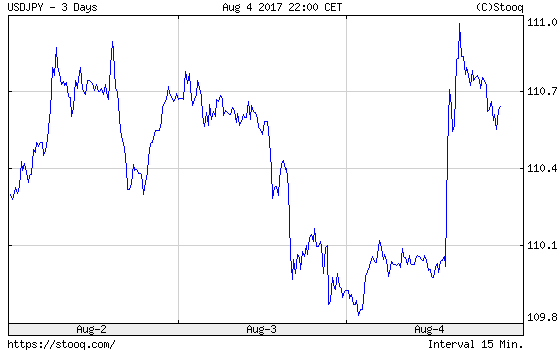
Chart 5: EUR/USD exchange rate over three last days.
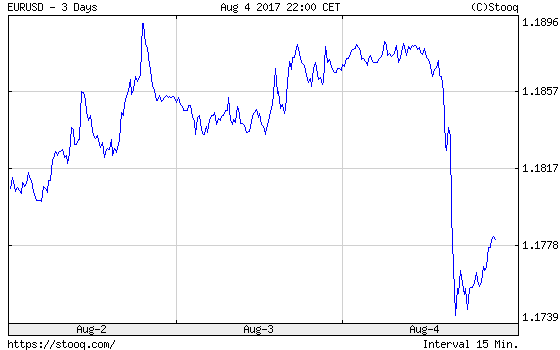
In consequence, the price of gold dropped about $12 in New York on Friday, as one can see in the chart below. The decline was generally in line with the surge in the US dollar.
Chart 6: Gold prices over the last three days.
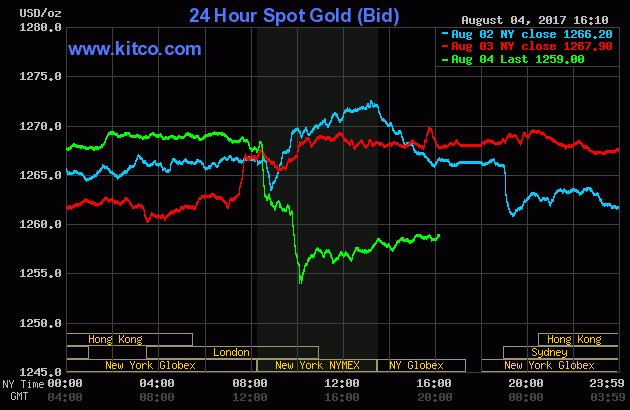
The bottom line is that although wage pressure remained tame on an annual basis, the July Employment Situation report was strong. The U.S. economy added 209,000, the unemployment rate fell back to 4.3 percent, and the average hourly earnings rose 9 cents. Hence, the recent report should keep the Fed on track for policy normalization, as it could convince the FOMC members that inflation will accelerate sooner rather than later. It is bad news for the yellow metal, as the strengthened expectations of the Fed hike this year should exert downward pressure on the price of gold. Although gold may struggle next week, the bounce in the U.S. dollar can be short-lived, as the recent employment report may not be enough to change the current outlook. Stay tuned!
Disclaimer: Please note that the aim of the above analysis is to discuss the likely long-term impact of the featured phenomenon on the price of gold and this analysis does not indicate (nor does it aim to do so) whether gold is likely to move higher or lower in the short- or medium term. In order to determine the latter, many additional factors need to be considered (i.e. sentiment, chart patterns, cycles, indicators, ratios, self-similar patterns and more) and we are taking them into account (and discussing the short- and medium-term outlook) in our trading alerts.
********

